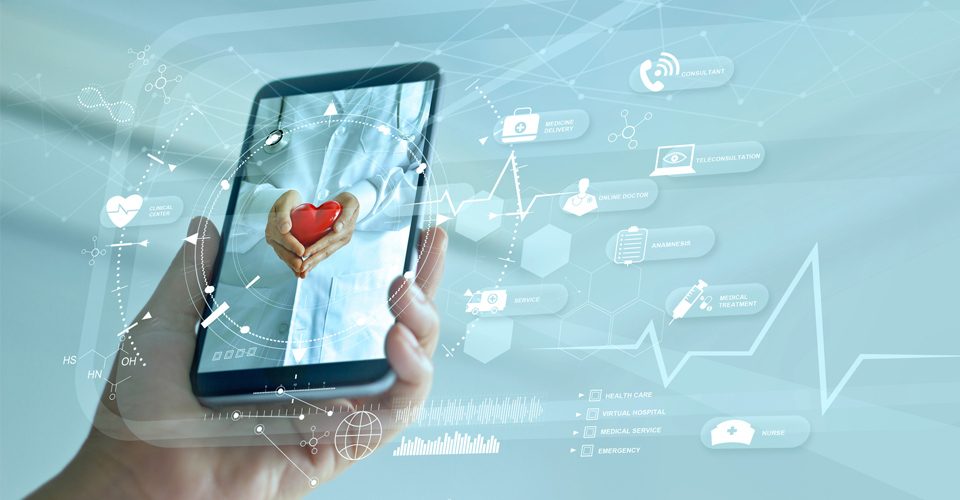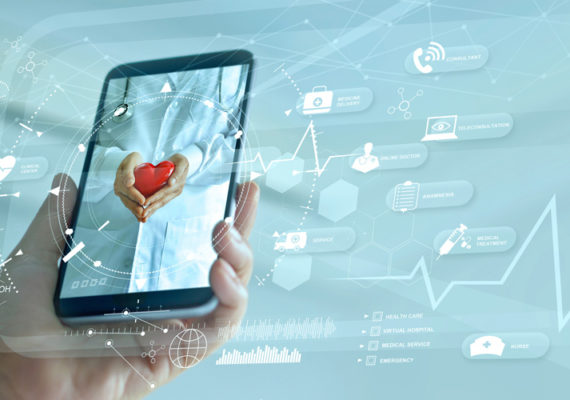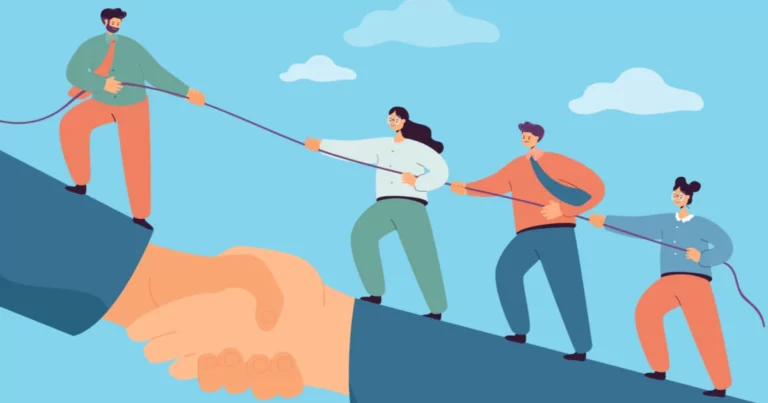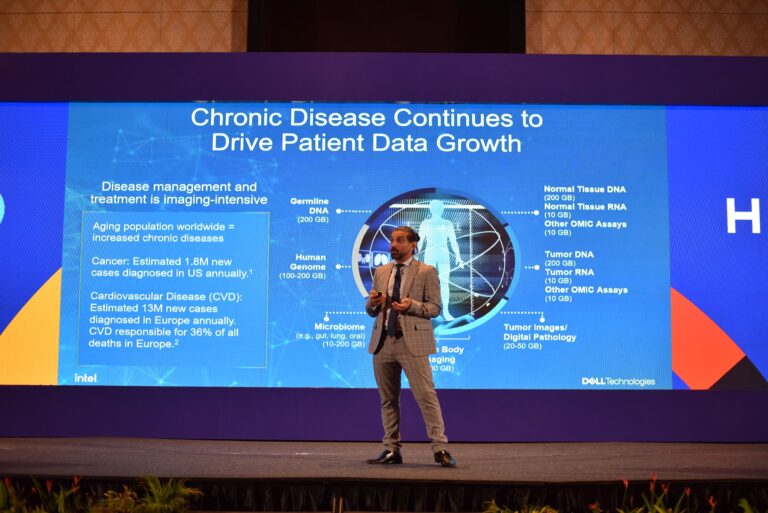By: A.J. Missaghi – Chief Technology Officer for Healthcare & Life Science at Dell Technologies APJ
The majority of healthcare institutions are still not integrating data from various wearable devices, IOT devices, in home care systems and telemedicine system with other medical records. This disconnection is not only limiting the benefits that can be gained, but hindering the development of new treatments.
Remote patient monitoring has been a revolutionary tool for care delivery models across the globe. It is a technology that enables remote communication without an intermediary. This allows healthcare providers to monitor patients in hospital, at home and from a distance through wearable devices, and track their vital signs.
In the future, these networks will become more integrated with local GPs who can talk to patients from afar and offer advice on coping strategies for chronic conditions.
This article discusses how healthcare institutions need to rethink their approach to remote patient monitoring in order to integrate it into everyday healthcare practices and episodes of care.
Just over a week ago, whilst laying in bed with a high temperature, and like many others facing typical symptoms of COVID-19, I began to question if I was going to make it through the night. Now for full disclosure I knew that the events of the past 2 years had influenced my perception and general thinking about my health being in a critical state. Afterall I had faced many common cold and flu episodes in my life with many of them having similar symptoms. I had enough sanity to convince myself that the high temperature will pass but at the same time I knew that COVID symptoms can quickly escalate and become life threatening. At this point it’s nearing 2022 New Year midnight celebrations and I am trying to avoid the worst case scenario. My chest at this point is tightening, I am getting cramps in my upper back region roughly between my shoulder blades and my breathing is becoming shallow. Arguably some early signs of heart problems. At the same time, I am conscientious that I am not the only one facing or having faced these symptoms. So instead of calling 000 – or 911 as my American friends would say – I decided to reach out to Nurse on Call. After a few ringtones and an automated answering system I was directed to a calm soothing voice of a nurse who no doubt ‘had seen this movie before’. She assured me that based upon my tone of voice I was fine but she needed to ascertain some additional information. And so began the data collection. Suddenly I realised that I have a wearable device which I had used for the past year on so many occasions to measure my recovery process post intense exercising such as running, cycling, weightlifting, or High-intensity Interval training as well as tracing my sleep patterns and stages such as REM or Deep sleep. The data being produced was exactly the type of data that the Nurse on Call was asking for. Whilst the content (i.e. Data) was the same, the context was subtly different. She was trying to put together this data to achieve different correlations.
My wearable device was spitting out real time data every second on my Resting Heart Rate, Respiratory rate, my Sleep pattern and recovery stages and my Heart Rate Variability. It gets better because I had access to historical data which had been accumulating over the past year and the picture that was being painted was one that not surprisingly my decline in health was not due to inappropriate amount of intense exercise – which I must admit that it’s not uncommon for my competitive nature – but due to COVID-19 having got a hold of my body and doing what it does best.
Now back to my conversation with Nurse on Call, my nurse assured me that my respiratory rate was within the normal range. Yes we agreed that a healthy and active individual should not be facing such a high level of respiratory rate but I was not in a critical state. She also agreed that my high heart rate and abnormal breathing patterns were common in COVID-19 patients but not a cause for alarm. She instructed me to take another dose of paracetamol to manage my high temperature, consume more liquids and rest.
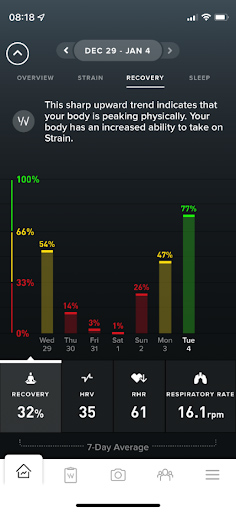
Screenshot 1
The overall indicator of my decline in health over the week.
Screenshot 2
Rapid increase in my Resting Hear Rate was a cause for concern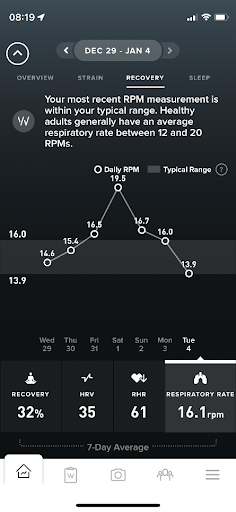
Screenshot 3
COVID-19 is known to directly impact respiratory rate and Blood Oxygen levels
The next morning I woke somewhat bruised and battered from being upset and not being able to celebrate New Year with my family and friends. But I couldn’t help wonder about how the events of the night before with my Nurse on Call avoided a trip to hospital and its associated waiting game in an emergency department, not to mention adding additional stress that I would have added to an already overwhelmed healthcare system.
Suddenly I see a news flash on the lounge room TV that the recent COVID-19 wave in Australia had crashed many ambulance and emergency departments. Many of the calls could have been avoided by a similar assessment that my nurse had made for me.
Wearable devices these days come in many sizes, colours and capabilities. Many of them such as Garmin have the capabilities that my Whoop device provided me. So the question is “why don’t we embrace them? Why doesn’t our healthcare system integrate these devices into Realtime patient monitoring platforms?”
Now these are somewhat rhetorical questions. My two decades of experience in the technology industry and in recent years the Healthcare Industry has taught me that these challenges are not just solved by technology, rather by embracing new ways of thinking that challenges the traditional healthcare operating models. The untapped opportunity in APJ around IOT devices is estimated to be approximately $44B and in ANZ alone we are facing a $200M virtual care opportunity, with many organisations racing to integrate the various parts of healthcare ecosystem. Dell Technologies and eCare21 have put together a proven virtual care platform that has solved some of these challenges. Join me in the next article to go deeper into what I believe Healthcare industry must embrace in order to position itself for the future of Healthcare by introducing remote patient monitoring and fully integrated highly secure virtual care platforms as well as introduce you to Dell Technology and eCare21 with virtual capabilities that supports above scenarios.
